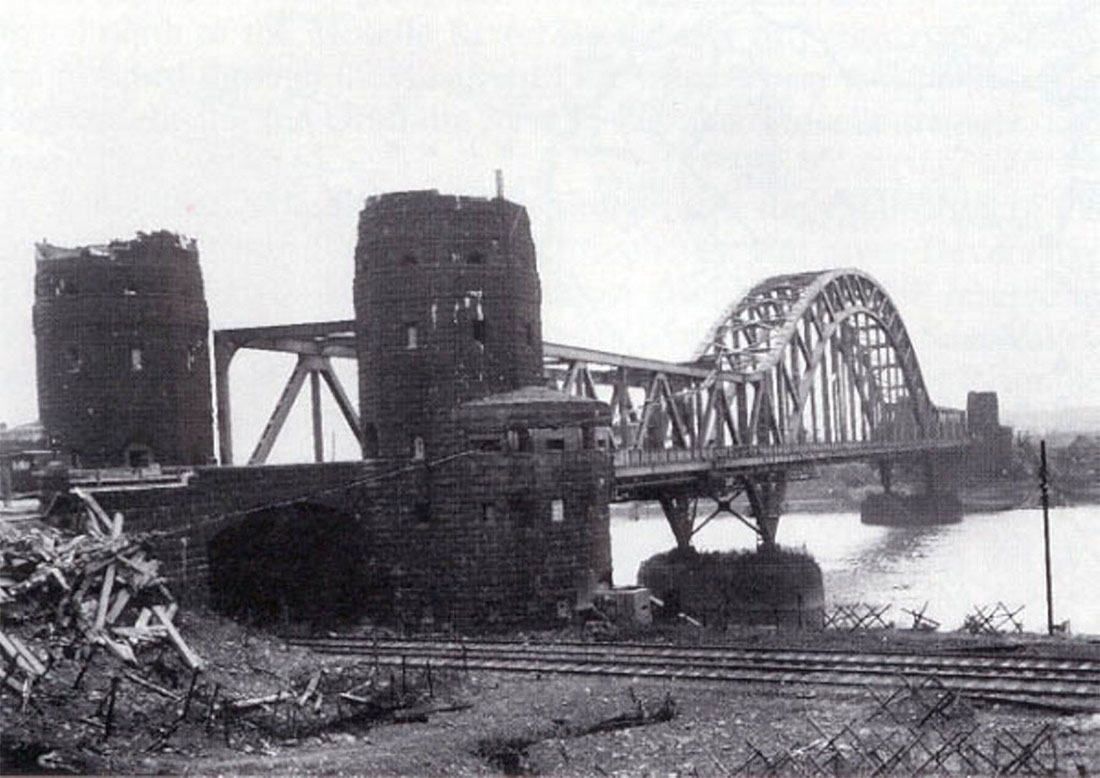|
Crossing the Rhine (Credit to Stars and Stripes magazine)
With Germany’s battered forces in retreat, the Allies still faced a major obstacle, the Rhine River. Flowing from Switzerland to the North Sea, the river forms a natural western barrier into the heart of Germany, and the Germans were systematically blowing all the bridges. Allied commanders expected that crossing the Rhine would be costly and difficult.
On the afternoon of March 7, 1945, forward units of the U.S. 9th Armored Division approached the Rhine at Remagen, a village south of Bonn. The troops knew there was a 400-yard long railroad bridge at Remagen but assumed it had been blown up. As patrols crested the ridge above the town, they were stunned to see the bridge intact, with German soldiers and civilians scurrying across the span. The senior U.S. officer, Lt. Col. Leonard Engemann of Minneapolis, had orders to turn south and link up with Patton’s forces. Instead, he decided to seize the bridge.
At 3:50 p.m., a U.S. platoon attacked, setting off furious volleys of gunfire as the Germans tried frantically to organize a defense. German prisoners said later the bridge had been wired with explosives just before the attack, but the German lieutenant in charge of the demolition was drunk. Sgt. Alexander Drabik of Holland, Ohio, raced across the bridge while Lt. John Mitchell of Pittsburgh cut the detonation wires under heavy machine-gun fire.
Soon hundreds of American trucks packed with troops were rolling over the bridge, establishing an eastern bridgehead and becoming the first invaders to enter Germany from the west since Napoleon. For a week, the German divisions attacked the bridgehead and tried to destroy the bridge with artillery, mortar fire, airstrikes and even frogmen in the water. By the time the bridge collapsed March 17, nearly 25,000 troops had poured across the river.
| Attachments: |

BRIDGE.jpg [ 162.41 KiB | Viewed 3592 times ]
|
NOOKYB 4th FG
4th But First!
Last edited by nookyb on Fri Jul 03, 2020 2:48 pm, edited 1 time in total.
|






